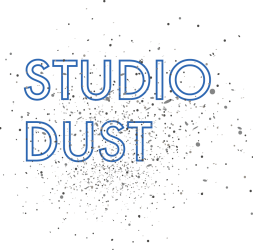>>> NEXT CHAPTER <<<PREVIOUS PAGE >TABLE OF CONTENTS<
5 RESEARCH CONCLUSIONS
With this research I tried to diverge between realities and methods. The research question ‘What constitutes the practice of a designer that assumes the role of a Pro-Am within the setting of a city lab concerning ecology (wicked problem) and what are the consequences for design education?” cannot result in one solution on one level. It rather results in enmeshed particles touching and connecting realities of ‘the real real’ and the ‘unreal real’ (Dunne and Raby, 2013, p.159)
Ecological issue’s demand new unique individual knowledge, that can’t be generated within the traditional ‘expert’ disciplines anymore. It requires transdisciplinary cooperation where all participants are experts and amateurs at the same time; where they are change makers. In order to create beneficial new knowledge it needs to touch ‘reality’, this reality and ‘safe’ ground is provided by city labs. Designers (as experts and Pro-Ams) play a vital role in these city labs. They provide an open, informed curious attitude needed to start cooperative alliances. They have the power of visualising an imaginable future, connecting an unforeseen unreality to a possible ‘real’ future. These new alternatives are ‘matter’ (Rancière 1991, p.76) which can be dealt with by experimentation. Experimenting with alternatives in these labs makes it subject of uncertainty; and creates new knowledge.
Fluid boundaries between Professionals / Pro-Ams as well as design education / labs have the potential of addressing the ecological issue’s and the creation of the urgently needed new knowledge. Design education should educate professional designers with an ecological mind-set in their DNA. Academies should also facilitate students to learn according to ‘universal teaching’ (Rancière, 1991) in labs to learn how to be Pro-Ams. But it requires an implementation of a a critical framework (Learn to Unlearn), because otherwise it will hollow the professional standard. There is a responsibility for education to implement this critical framework. Educating future designers with an ecological literacy at the core of their expertise and trained with this critical framework and learn to be a Pro-Am’s in a new topic is essential. Implementing these changes could be regarded a wicked problem. This requires other forms of implementation. Fluid boundaries between design education and labs provide the possibility to experiment with different forms of transitions. A city lab could be a canvas to change education from the ‘outside’. The essential side effects of Amateurs, Pro-Ams and Experts working together, as it builds social capital, could also have a similar effect of uniting ‘society’ and institutions (education), if it allows fluid boundaries.
This research connects to a ‘real’ possible future, as it posses between the lines: What if we are not educating anymore for professionals in the context of ‘workers’? If the automation is continuing and the concept of ‘workers’ becomes obsolete? Will we start educating ‘professional amateurs? Can education educate people to become a ‘change maker’? What if the lab could be a supplement to (Academic) education; as ‘school’ has the entomological origin of ‘skholē’ (Greek): ‘leisure time’? I’d love to end this thesis by mentioning that I’d like this input to be used by all ‘the ‘amators’ in the world. Let all the small particles in this research disintegrate into something else. Lets allow it to become ‘from dust to dust’.
>>> NEXT CHAPTER <<<PREVIOUS PAGE >TABLE OF CONTENTS<

